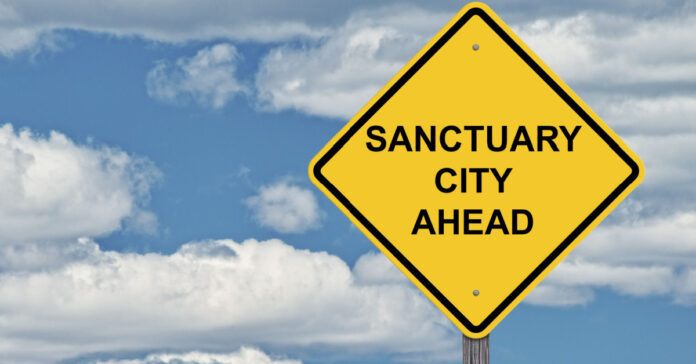
The concept of sanctuary cities in the United States has been increasingly discussed and debated due to ongoing political and social issues. But what exactly do these municipalities mean when they claim to offer sanctuary? What benefits can they provide to their inhabitants and those seeking refuge? In this article, we explore the primary characteristics of sanctuary cities in America.
1. Definition:
A “sanctuary city” refers to any local government unit that is committed to upholding the rights of immigrants and limiting its cooperation with federal immigration enforcement agencies. Most importantly, a sanctuary city abides by more limited support or limitations in collaboration with local, state, and federal governments related to actions directed toward enforcing federal immigration laws. This practice includes avoiding efforts to identify undocumented individuals living within their territorial limits, declining certain requests seeking detention facilities from Immigration Customs and Enforcement (ICE), and not responding to requests for warranted immigration holds.
2. Protection and Safe Havens:
To be characterized as a sanctuary city, municipality leaders typically pledge to adopt policies that protect residents regardless of their immigration status. These safeguards may apply to public spaces such as schools, healthcare resources, and courthouses. Many jurisdictions aim to prevent mass deportation efforts, offering access to education, work authorization cards, legal representation, and general public safety measures, ensuring that these individuals are offered the chance to integrate into society and create opportunities for themselves.
3. A Diverse and Inclusive Community:
Sanctuary cities embody a diverse and inclusive community ethos. By providing assistance, resources, and protection for different backgrounds and cultures, these cities serve as a model example showcasing the collective value of unity, equality, and opportunity for all. Through integration, the strengthened understanding of other cultures, languages, and experiences helps communities strive to create greater opportunities for all.
4. Collaborative Approaches with Law Enforcement Officials:
In sanctuary cities, Police Departments often emphasize their relationship with all members of their communities—immigration status be damned. Many policymakers work toward training officers for nonpartisan collaboration with local, state, and federal law enforcement, ensuring that trust and mutual agreement remain despite policy differences and potential misunderstandings.
5. Economic Impact:
Maintaining an attractive position as a place for work and business can improve the local economy of sanctuary cities. According to research conducted in recent years, cities offering protections for undocumented immigrants have tended to develop faster economically compared to their counterparts not taking such stands. The increase in consumption power, availability of new jobs created, and diversification of talent and culture can positively affect businesses, industries, the real estate market, and growth rate.
Ensuring the basic human rights and protection of all citizens, including those without documentation or vulnerable minority groups, should be one of the key priorities of every city or country. Hence, these sanctuary cities exemplify a shift towards compassion, understanding, and solidarity. While there might be pros and cons associated with sanctuary city policies, it is crucial to acknowledge that these towns and cities exist due to the genuine concerns felt by their leaders regarding the welfare of their constituents rather than a means to subvert federal enforcement. They continue serving as havens wherein marginalized individuals can re-find hope, safety, respect, and a sense of belonging within the complex landscape of modern American society’s multitude of challenges.
Final Thoughts:
Whether considered admirably progressive and necessary or problematic amid heightened political debate, sanctuary cities present a remarkable socio-political movement across the United States. These urban hubs of inclusion and diversity symbolize a nation coming together for the better good, advocating on-the-ground solutions based on individual cities‘ unique needs while collectively addressing pertinent national concerns.







